The New Year will see missions returning to the Moon and much more.
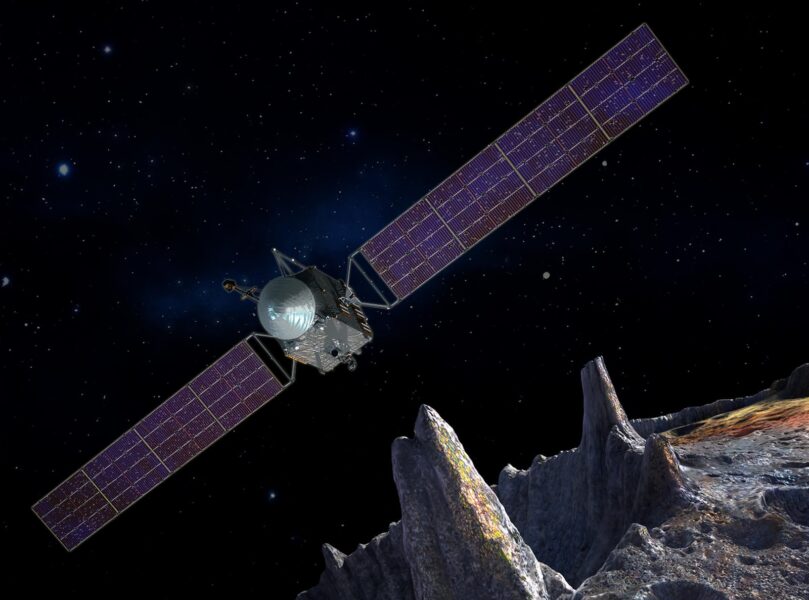
NASA / JPL
2022 promises to be a busy year for spaceflight. SpaceX will attempt the first orbital test flight of its Starship early in the calendar year, and NASA’s heavy-lift rocket may finally fly mid-year after many delays. Several lunar missions are in the works, as is a mission to an iron asteroid. To top it all off, Mars reaches opposition, and thus launch season, at the close of 2022.
(Keep in mind, launch schedules are fluid and subject to change. What follows reflects the status of missions as December 30, 2021.)
In Earth Orbit
The year gets off to an exciting start right at the turn of the calendar page, as SpaceX has hinted that they may conduct an orbital test launch of its Starship rocket from the company’s Boca Chica facility in Texas as early as February. Starship is a workhorse that will not only carry 100 tons (220,000 pounds) to low-Earth orbit but may also one day land heavy payloads on the Moon and Mars.
The FAA continues its Programmatic Environmental Assessment (PEA) for the proposed @SpaceX Starship/Super Heavy project in Boca Chica, Texas. The new target date for issuing the Final PEA is February 28. Learn more at https://t.co/CZy1jVb5qM. #FAASpace pic.twitter.com/NjNyUsgF4I
— The FAA ✈️ (@FAANews) December 28, 2021
Later this spring, Boeing’s Starliner is set to resume test flights, after a semi-failure in December 2019, when the uncrewed capsule made it to orbit and back but didn’t make it to the International Space Station (ISS).
And speaking of the ISS, SpaceX will also carry out the first AX1 Crew Dragon tourist flight in February, the first of two tourist flights for the company in 2022.
Space Telescopes and More
The beginning of the New Year will also bring commissioning of the just-launched James Webb Space Telescope and Imaging X-ray Polarimetry Explorer. China may also launch its Advanced Space-based Solar Observatory in January, the country’s first dedicated solar mission.
The Indian Space Research Organization (ISRO) also plans to field its own solar observatory mission, Aditya-L1, in late 2022. Like the Solar and Heliospheric observatory (SOHO), Aditya-L1 will head toward the Sun for the L1 Lagrange point.
Meanwhile, the European Space Agency (ESA) will launch the Laser Relativity Satellite 2 on a Vega rocket in April. The mission will test general relativity in Earth's gravitational field.
Return to the Moon
The number of planned lunar missions makes 2022 a fascinating year for spaceflight.
Kicking off the lunar launch list for 2022 is Artemis 1, lifting off no earlier than February 12th. This is the inaugural flight of the Space Launch System (SLS), NASA’s heavy-lift rocket that is key to the Artemis initiative to return humans to the Moon. Artemis 1 is uncrewed and will put the Orion Multi-Purpose Crew Vehicle in a six-day retrograde orbit around the Moon before returning it to Earth. Artemis 1 will also deploy several CubeSat payloads.
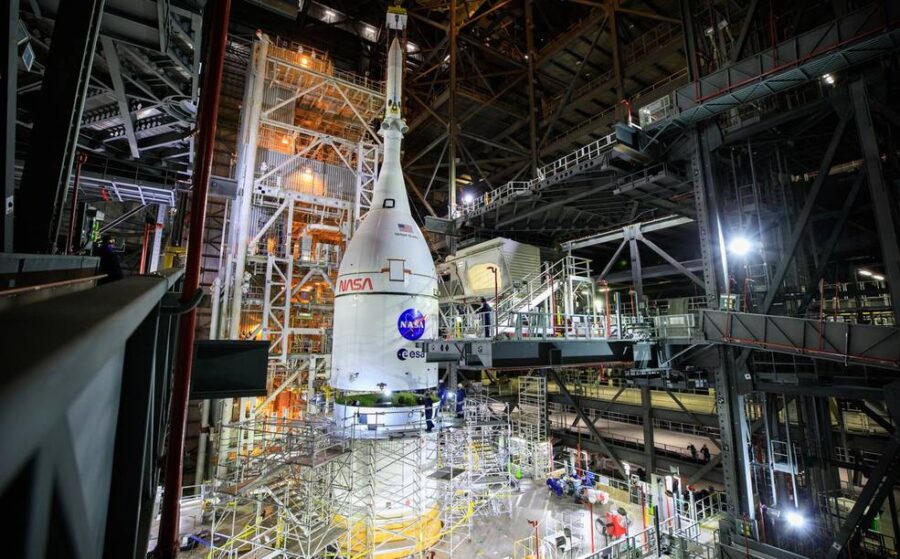
NASA / Frank Michaux
Another Artemis program mission launches no earlier than March 19, as the Cis-lunar Autonomous Positioning System Technology Operations and Navigation Experiment (CAPSTONE) heads to the Moon. CAPSTONE is a pathfinder mission for the crewed Lunar Gateway platform, which will serve as a way-station for teams headed to the lunar surface. Like the Gateway, CAPSTONE will enter and demonstrate the stability of a near-rectilinear halo orbit around the Moon. CAPSTONE will launch on a Rocket Lab Electron rocket from the company's Mahia Launch Complex One in New Zealand.
You can also expect to see the first commercial lunar landings in 2022, as part of NASA’s Commercial Lunar Payload Services Program (CLPS). First up is Intuitive Machines’ Nova C lander, which will deliver five payloads to the lunar surface in April during the IM 1 mission.
The company also plans to land a second mission, IM 2, near the lunar south pole in December. IM 2 will also carry five payloads, including the Micro-Nova lunar hopper and NASA's Polar Resources Ice Mining Experiment, which includes The Regolith and Ice Drill for Exploration of New Terrains (TRIDENT) drill for sampling the subsurface.
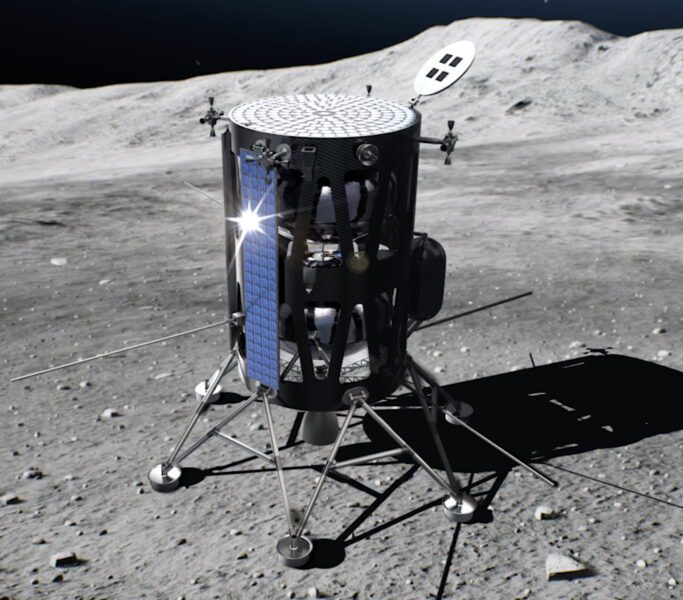
Intuitive Machines
Astrobotics will also carry out its Peregrine Mission One under CLPS in mid-2022. The Peregrine lander will launch on the inaugural flight of United Launch Alliance’s Vulcan-Centaur rocket and carry more than a dozen payloads for NASA and other commercial partners to the Lacus Mortis plateau region on the Moon.
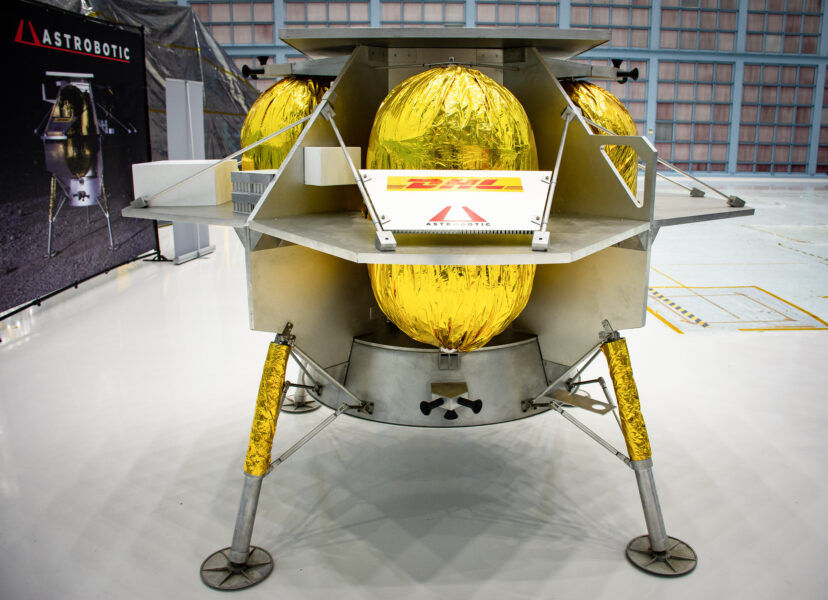
NASA/GSFC/Rebecca Roth
Other nations and space agencies are planning on heading to the Moon in 2022 as well. The Japanese Aerospace Agency (JAXA) will send the Smart Lander for Investigating the Moon, a technology demonstrator for precision landing. On its way, that mission will also deploy the small joint JAXA/NASA X-ray Imaging and Spectroscopy Mission into low-Earth orbit.
The ISRO will also attempt a lunar landing in 2022 with the Chandrayaan 3 mission. Though Chandrayaan 2 remains in lunar orbit, the Vikram lander failed in 2019. Like Chandrayaan 2, Chandrayaan 3 is an orbiter-lander-rover combination.
Russia’s Roscosmos also plans to send Luna 25 to the Moon in July. Luna 25 will land in the lunar south pole region in Boguslavsky crater and will be Russia’s first lunar mission since Luna 24 in 1976, launched during the Soviet era.
The United Arab Emirates also wants to send up the Emirates Lunar Mission, which will include a micro-rover accompanying the Hakuto-R mission built by the Japanese company ispace to the lunar surface.
South Korea plans on launching the Korean Pathfinder Lunar Orbiter (KPLO) in August 2022. KPLO will be the first lunar/planetary mission for the Korean Aerospace Research Institute.
Finally, there’s word that the Ukrainian-based Lunar Research Service (LRS) company may launch a small mission from Andøya Space Center in Norway late in the year. It would fly on the inaugural flight of the three-stage RFA-One rocket, built by Rocket Factory Augsburg in Germany.
Mars Season and Beyond
Looking out to planetary exploration, two exciting missions are scheduled to depart Earth in 2022.
First up is Psyche, launching on a SpaceX Falcon Heavy rocket in August. Psyche is headed to explore the eponymous metallic asteroid 16 Psyche, with arrival expected in early 2026. Psyche will also carry Janus as a secondary payload, which will fly to the binary asteroids 1996 FG3 and 1991 VH.
Finally, as the Red Planet reaches opposition in December 2022, a window opens for missions to launch to Mars. One mission is expected to make the trip this year, as the joint Roscosmos/ESA ExoMars mission is due to lift off from the Baikonur Cosmodrome on September 20th. The mission will deliver the Rosalind Franklin rover and Kazachok lander to Oxia Planum on June 10, 2023. A successful Mars landing would be a first for both ESA and Roscosmos. ExoMars 2022 was delayed from the 2020 launch window, to allow for additional tests and software and hardware integration, as per recommendations from Russian and European Inspector Generals.
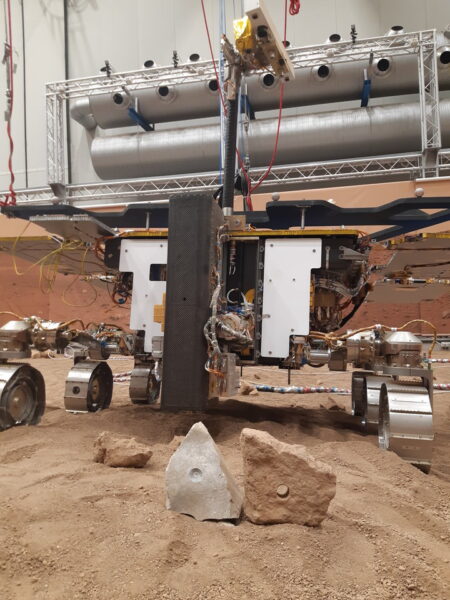
ESA
Action in Deep Space
Meanwhile, missions in deep space continue to make their way to their destinations in 2022.
ESA’s BepiColombo will make its second flyby past Mercury on June 23rd. The agency’s Solar Orbiter will also make its third flyby past Venus on September 3rd, a maneuver that will change the mission's inclination so that it will have a more polar view of the Sun.
Meanwhile, NASA’s Juno spacecraft will make a pass near Jupiter’s moon Europa on September 29th. And Lucy will make its first pass near Earth on October 16th as it's en route to the Trojan asteroids by the end of the decade.
Also, all eyes will be on NASA’s just-launched Double Asteroid Re-direction Test (DART), as it arrives at the binary asteroid Didymos next year, and crashes into the tiny moonlet Dimorphos on September 26, 2022.
2023 and Beyond
And there’s more to come: 2023 will see the launch of ESA’s Jupiter Icy Moons Explorer (JUICE), Exomars 2022’s landing on the Red Planet, and the Osiris-Rex sample return (at last) to Earth on September 24th.
It’s an exciting time in spaceflight for sure, in 2022 and beyond.
 3
3
Comments
Andrew James
December 30, 2021 at 3:17 pm
...and China?
You must be logged in to post a comment.
David DickinsonPost Author
December 31, 2021 at 9:50 am
Interestingly, as busy as China was in space in 2021, I only came across one new science mission for the CNSA in 2022 in research: the new solar observatory ASO-S.
You must be logged in to post a comment.
Andrew James
December 31, 2021 at 4:11 pm
Umm. Finishing the construction of the Tiangong space station will be the main highlight, but the development of reusable rocketry will be the game changer in 2022.
You must be logged in to post a comment.
You must be logged in to post a comment.